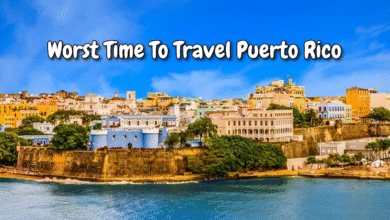Understanding When is hurricane season in Puerto Rico: Dates and Key Information
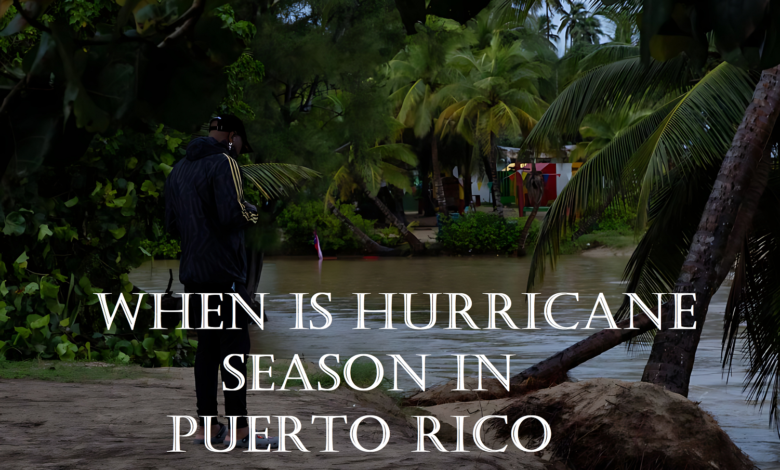
Overview of the Atlantic Hurricane Season
When is hurricane season in Puerto Rico ?
The Atlantic Hurricane Season runs annually from June 1 to November 30, marking a time when the waters of the Atlantic Ocean warm up, creating conditions conducive for the formation of hurricanes and tropical storms. These storms can develop from disturbances such as thunderstorms and low-pressure systems. The peak of the hurricane season is typically from August to October when the water temperature is warmest and atmospheric conditions are most favourable for storm formation. The Caribbean, including Puerto Rico, is particularly vulnerable due to its location in the path of these storms.
For Puerto Rico, the hurricane season represents a critical period of preparedness and vigilance. Historically, the island has experienced some of the most devastating storms in the Caribbean. The region is susceptible to various types of hurricanes, including Category 1 through Category 5 storms, which vary in intensity and destructiveness. Understanding the general timeframe and likelihood of storms during this season allows residents, businesses, and government agencies to plan and take preventive actions to reduce potential damage.
The Importance of Understanding the Season’s Dates
Understanding the dates of the hurricane season is crucial for residents of Puerto Rico to be adequately prepared for potential storms. The start and end of the season, June 1 to November 30, are not just calendar markers; they signal a time when hurricane activity typically increases fappeningblog in frequency and intensity. It is important to note that although most hurricanes form during this period, tropical storms and even hurricanes can occur outside the official dates, as seen with off-season storms in the past. The awareness of these dates helps individuals stay updated on weather patterns and makes it easier to focus efforts on preparedness.
For example, the early months of the hurricane season, particularly June and July, may not see as many storms. However, the risk heightens when August and September roll around. Puerto Rico’s residents and local authorities must be ready with emergency plans, supplies, and evacuation routes well in advance. Relying on weather forecasts and warnings from official agencies like the National Hurricane Center is vital to ensure timely evacuations and safety measures, preventing unnecessary damage and loss of life.
Also Read: Best Places to Travel Right Now in the USA (2025 Guide)
When is Hurricane Season in Puerto Rico?
Hurricane season in Puerto Rico spans from June 1 to November 30 yearly. This period marks the peak when hurricanes and tropical storms will most likely form in the Atlantic. While storms can develop outside of these dates, the official season provides a key window for monitoring and preparation. The island is vulnerable to these storms, and residents and officials need to stay alert and take the necessary precautions throughout this timeframe.
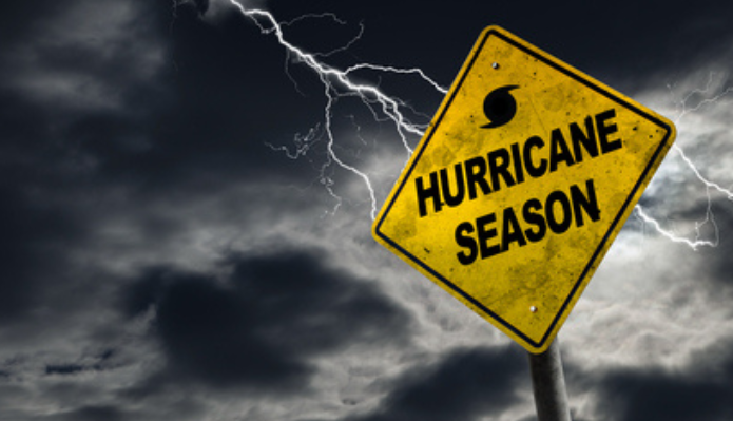
Official Dates: June 1 to November 30
The official hurricane season in Puerto Rico, as defined by the National Hurricane Center (NHC), begins on June 1 and ends on November 30 each year. This time frame is crucial for understanding the increased likelihood of tropical storms and hurricanes. The season is divided into several phases, with the most intense activity occurring from August to October. These months, coinciding with the peak of the Atlantic hurricane season, bring higher chances of severe weather. Throughout this period, Puerto Rico is particularly susceptible to direct hits or nearby storms, making it essential for residents and visitors to monitor forecasts closely.
Historical Hurricane Trends in Puerto Rico
Historically, Puerto Rico has been heavily impacted by hurricanes, some of which have caused catastrophic damage. Notable storms such as Hurricane San Ciriaco (1899), Hurricane Hugo (1989), and Hurricane Maria (2017) have left significant marks on the island. These storms demonstrated the vulnerability of Puerto Rico’s infrastructure, agriculture, and economy. Over the years, hurricane trends have shown an increasing intensity in the storms hitting the region, possibly due to climate change, which makes it even more critical for preparedness measures to evolve. Early-season storms, particularly those that form in August and September, are often the most powerful.
How Hurricanes Impact Puerto Rico
Effects on Infrastructure and Power Supply
Hurricanes can devastate Puerto Rico’s infrastructure, leaving behind widespread damage. The island’s road networks, bridges, and airports are vulnerable to high winds and flooding. Roads may become impassable due to fallen trees, debris, and flooding, complicating evacuation efforts and hindering relief operations. Power lines are often downed, causing prolonged power outages across the island. After Hurricane Maria in 2017, power restoration efforts took months due to the extent of the damage. A reliable power supply is essential for daily life, and repairing the electrical grid is a key priority after such storms.
Damage to Homes and Businesses
Homes and businesses in Puerto Rico are at significant risk during hurricane season. The high winds, torrential rains, and flooding from these storms can lead to severe structural damage. Roofs can be torn off, windows shattered, and walls breached by floodwaters. Many buildings, particularly in low-lying areas, are at risk of submerging. After Hurricane Maria, thousands of homes were left uninhabitable, displacing residents and requiring massive rebuilding efforts. Businesses, especially small ones, may face long-term closures due to structural damage and inventory loss. Recovery for homeowners and business owners alike can take years.
Impact on Agriculture and the Economy
Agriculture in Puerto Rico is also heavily impacted by hurricanes, as crops and livestock are often destroyed by flooding and high winds. The island’s agricultural industry, which includes crops such as coffee, sugarcane, and tropical fruits, can suffer massive losses when fields are inundated or damaged. After Hurricane Maria, the agricultural sector saw a drastic decline, with billions in losses, severely affecting the economy. The economic toll extends beyond agriculture, as tourism, the island’s other primary economic driver, can take a hit from infrastructure damage and safety concerns. Overall, the economic recovery from a hurricane can be slow, with long-lasting impacts on employment and local businesses.
Preparing for Hurricane Season in Puerto Rico
Creating a Family Emergency Plan
Creating a family emergency plan is one of the most essential steps in preparing for hurricane season in Puerto Rico. This plan ensures that every household member knows what to do during a hurricane. It should include details on how to communicate, where to meet if separated, and what actions to take depending on the storm’s severity. Key components of the plan should involve designating a safe room within the house or an evacuation destination, making sure each family member has emergency contact information, and outlining the roles of each person. Regularly reviewing and practising the plan is also vital to ensure everyone is familiar with the process.
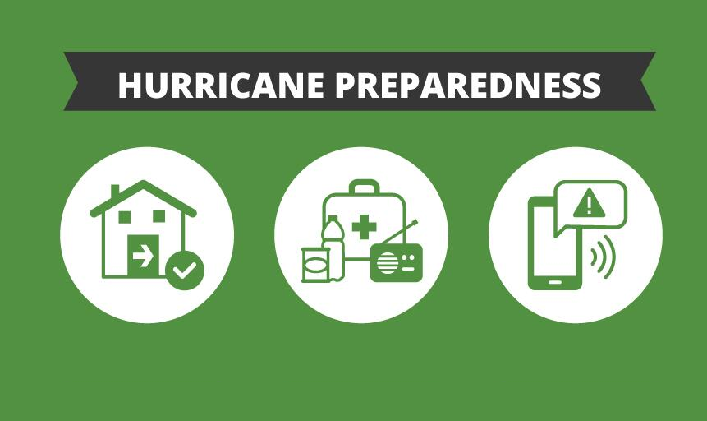
Building an Emergency Kit
An emergency kit is a critical part of hurricane preparedness. It should contain essential items to sustain your family for several days in case of power outages or difficulty accessing supplies. A basic emergency kit should include water, non-perishable food, flashlights, extra batteries, first aid supplies, medications, personal hygiene items, and essential documents (stored in waterproof containers). Additionally, it’s wise to include items like a portable phone charger, blankets, and clothing suitable for varying weather conditions. By assembling and storing this kit ahead of time, residents can ensure they are ready for any storm without scrambling for supplies at the last minute.
Understanding Evacuation Routes and Shelters
Understanding the designated evacuation routes and shelters in Puerto Rico is crucial to hurricane preparedness. Before a hurricane strikes, knowing the safest routes out of your area and how to reach a shelter if evacuation is necessary is essential. Local authorities usually provide this information through public service announcements; staying updated on any changes is critical. Knowing the location of local shelters, especially those that can accommodate pets or individuals with special needs, can save lives in severe storms. Pre-planning evacuation routes and shelter options will smooth the process and reduce panic during a storm.
Also Read: Samantha Hegseth & Jennifer Rauchet – Bio, Career, Net Worth, Height & More
Key Safety Tips for Puerto Rico During Hurricane Season
What to Do Before, During, and After a Hurricane
Before a hurricane hits Puerto Rico, it is crucial to prepare in advance. Ensure your emergency kit is stocked with essentials, secure your home by reinforcing windows and doors, and stock up on supplies like water, non-perishable food, and medications. Stay informed by monitoring weather reports and following evacuation orders if needed.
During the storm, remain indoors in a safe location, away from windows and doors. If evacuation is necessary, do so promptly and head to designated shelters.
After the hurricane, wait for official all-clear signals before venturing outside. Be cautious of downed power lines, flooding, and structural damage. Follow local authorities’ advice for safe cleanup procedures and report any damage to your insurance and relevant emergency services.
Protecting Your Property from Storm Damage
Protecting your property is a priority before hurricane season hits. Start by ensuring your home is structurally sound. Reinforce doors and windows with storm shutters or plywood to prevent flying debris from causing damage. Clear gutters and drains around your property to prevent flooding caused by blocked water flow. Trim trees and bushes to minimize the risk of branches falling on your home. Additionally, securing outdoor items such as patio furniture, grills, and tools will prevent them from becoming dangerous projectiles during high winds. Review your homeowner’s insurance policy to ensure you’re adequately covered for storm-related damage.
Staying Informed: Weather Alerts and Updates
Staying informed is vital for making timely decisions during hurricane season. Always have access to reliable weather information, such as the National Hurricane Center (NHC) updates, which provide storm forecasts and warnings. Ensure you have a battery-powered or hand-crank radio to receive emergency broadcasts in case of power failure. Sign up for local alerts through your phone, enabling weather app notifications to receive real-time information. Monitor official government channels for evacuation orders and shelter openings, including emergency management agencies. Being informed allows you to take immediate action and ensures your safety.
Hurricane Forecasting and Monitoring in Puerto Rico
Role of the National Hurricane Center (NHC)
The National Hurricane Center (NHC) is crucial in forecasting and monitoring hurricanes that may affect Puerto Rico. As a part of the National Weather Service, the NHC is responsible for tracking storms from their development in the Atlantic to their landfall. It provides up-to-date weather alerts, forecasts, and warnings for tropical storms, hurricanes, and other severe weather events that might impact Puerto Rico and the Caribbean. The NHC’s expert meteorologists use various tools to analyze storm patterns and provide critical information, helping the government and the public prepare in advance. Their forecasts include projected storm paths, wind speed predictions, and potential impacts, giving Puerto Ricans a chance to take protective measures ahead of a storm’s arrival.
Tools for Monitoring Storms (Satellite Images, Radar, and Tracking)
Monitoring hurricanes requires advanced technology to predict their path and intensity. Satellite imagery is one of the key tools used to observe storms in real-time, allowing meteorologists to see cloud formation, storm movement, and changing patterns over vast distances. This data helps determine the storm’s development and forecast its trajectory. Additionally, radar systems track precipitation and storm intensity and identify dangerous features like tornadoes or heavy rainfall. Hurricane tracking tools include the National Hurricane Center’s tracking maps, which show predicted storm paths based on the most up-to-date data. This helps Puerto Rican authorities and residents prepare for the worst-case scenario while staying informed as storms evolve.
Historical Hurricane Seasons in Puerto Rico
Notable Hurricanes: Hurricane Maria (2017), Hurricane Irma (2017)
Puerto Rico has experienced several devastating hurricanes, but Hurricane Maria (2017) stands out as one of the most catastrophic. Maria landed on September 20, 2017, as a Category 4 storm, bringing devastating winds, rainfall, and flooding to Puerto Rico. The island’s infrastructure, including the power grid, was severely damaged, leaving millions without power for months. The storm caused significant loss of life, with thousands of people either killed directly or indirectly due to the storm’s aftermath. Maria’s aftermath exposed Puerto Rico’s infrastructure vulnerabilities, emergency response, and recovery capabilities.
Before Maria, Hurricane Irma (2017) passed near Puerto Rico on September 6, 2017, as a Category 5 hurricane. While Irma did not make direct landfall, its winds and rain caused widespread damage, particularly in the northern parts of the island. Irma’s passage over Puerto Rico was a stark reminder of the island’s vulnerability to major storms. Both hurricanes were part of a particularly active 2017 hurricane season, emphasizing the need for enhanced preparation, resilience, and long-term recovery strategies in Puerto Rico.
Lessons Learned from Past Storms
The experiences of past hurricanes, especially Maria and Irma, have taught Puerto Rico invaluable lessons about preparation, response, and recovery. One of the primary lessons is the need to invest in more substantial, more resilient infrastructure. Hurricane Maria revealed the fragility of Puerto Rico’s electrical grid, highlighting the importance of improving power generation, distribution systems, and alternative energy sources like solar power to restore power quickly after a storm.
Another lesson is the importance of community preparedness. The island’s vulnerability to hurricanes requires that all residents have clear evacuation plans, emergency kits, and reliable communication channels to stay informed. The hurricanes also showed the importance of coordination among local, state, and federal agencies during disaster response and recovery. Efforts to improve early warning systems, evacuation procedures, and the availability of emergency shelters have since been prioritized. Finally, the storms demonstrated the necessity for long-term, sustainable recovery plans, especially for housing, healthcare, and economic rebuilding, to ensure that Puerto Rico is better equipped for future hurricanes.
The Impact of Climate Change on Hurricane Season
How Rising Ocean Temperatures Affect Storms
Climate change is significantly influencing the strength and frequency of hurricanes. Rising ocean temperatures, which directly result from global warming, serve as the primary fuel for tropical storms and hurricanes. Warm water in the ocean is a key ingredient for storm development, providing the energy needed for a storm to intensify. As ocean temperatures increase, the potential for stronger hurricanes grows, as warmer waters lead to more powerful winds, higher rainfall, and more significant storm surges. This trend is especially concerning for Puerto Rico, which lies in the Caribbean, a region vulnerable to hurricane activity. As a result, storms in the Atlantic may become more intense, with more significant rainfall and higher winds, increasing the potential for catastrophic damage to the island.
Moreover, warmer waters can extend the duration of the hurricane season. In the past, storms were more likely to form in late summer and fall, but with warmer oceans, hurricanes can develop earlier in the season and linger longer. This prolonged storm activity means that Puerto Rico must remain vigilant for a more extended period each year, making it even more crucial for residents and authorities to adapt to these new, more erratic patterns in storm behaviour.
Predictions for the Future of Hurricane Season in Puerto Rico
As the planet continues to warm due to climate change, predictions for the future of hurricane seasons in Puerto Rico point to an increased risk of more powerful and more frequent storms. Research suggests that the frequency of intense hurricanes (Category 4 and 5) will likely rise over the next few decades, with storms expected to become more substantial due to the continued increase in ocean temperatures. These more powerful hurricanes will likely bring higher wind speeds, significant storm surges, and intense rainfall, all contributing to severe flooding and widespread damage.
The changing climate may also cause shifts in hurricane season patterns, leading to more prolonged or unpredictable seasons. As a result, Puerto Rico’s residents and infrastructure must adapt to these changes by investing in climate resilience, strengthening buildings to withstand stronger winds, and updating emergency response plans to accommodate the increased frequency and severity of storms. Long-term strategies such as incorporating renewable energy sources and enhancing storm forecasting capabilities will be essential in reducing the impact of future hurricanes and ensuring the island’s ability to recover quickly from these powerful storms.
Tourism and Hurricane Season: What Travelers Should Know
How Hurricane Season Affects Tourism in Puerto Rico
Hurricane season in Puerto Rico significantly affects the island’s tourism industry. From June to November, the potential for hurricanes and tropical storms increases, causing uncertainty for tourists planning to visit. Many travellers may hesitate to book trips during these months due to the possibility of disrupted travel plans, flight cancellations, and changes to scheduled activities. The island’s tourism sector, which relies heavily on warm weather, beaches, and outdoor activities, can be deeply impacted by the damage caused by storms. In addition to immediate impacts on hotels, restaurants, and attractions, the storm’s aftermath can delay recovery, causing long-term disruptions to the tourism economy.
However, Puerto Rico is well-prepared for these storms, and many businesses cater to hurricane season by offering flexible booking policies and ensuring that their facilities are storm-resistant. For tourists, it is essential to be aware of the season’s risks and take proper precautions before travelling. While hurricanes are not guaranteed, the season brings heightened vigilance for the island’s residents and tourists.
Cancelling or Rescheduling Travel Plans
During hurricane season, travellers to Puerto Rico may find it necessary to cancel or reschedule their plans, mainly if a major storm is predicted to impact the island. Many airlines, hotels, and tour companies offer flexibility during hurricane season, allowing tourists to adjust their travel dates or receive refunds in the event of severe weather. It’s essential for travellers to check the cancellation policies and to stay informed about any potential disruptions well in advance. If a hurricane is expected to impact Puerto Rico, government-issued advisories and warnings will likely prompt evacuations and closures of tourist attractions, so rescheduling travel plans may be the best option for safety.
Travel insurance can be beneficial for protecting against the financial impacts of unexpected cancellations or changes, especially if the traveller cannot reschedule or the storm results in flight delays or cancellations. Before booking a trip, it’s advisable to consider travel insurance terms to cover unforeseen circumstances such as hurricanes.
Precautionary Measures for Tourists Visiting During Hurricane Season
Taking precautionary measures for tourists visiting Puerto Rico during hurricane season can help ensure a safe and enjoyable trip. First, staying informed by regularly checking weather reports and updates from the National Hurricane Center (NHC) is advisable. Tourists should sign up for local emergency alerts to receive real-time notifications about storm developments and evacuation instructions.
Second, tourists should familiarize themselves with evacuation routes and the location of shelters in case they need to relocate during a storm. Hotels and resorts in Puerto Rico are generally well-equipped to handle hurricanes, so it’s essential to know the evacuation procedures of your accommodation. It’s also crucial to have an emergency kit, which may include essentials like water, snacks, medications, and a flashlight.
Finally, visitors should purchase travel insurance that includes coverage for weather-related disruptions. This can help protect their investment if they need to cancel or cut their stay short. Although the chances of a hurricane hitting during a visit are low, being prepared ensures that travellers can have a safe experience while enjoying Puerto Rico’s natural beauty during the hurricane season.
Government Preparedness and Response in Puerto Rico
The Role of FEMA and Local Agencies
In Puerto Rico, the Federal Emergency Management Agency (FEMA) plays a crucial role in disaster preparedness, response, and recovery efforts during hurricane season. FEMA works in coordination with local government agencies, including the Puerto Rico Emergency Management Bureau (PREMB), to ensure that both preventive measures and post-storm recovery processes are in place. FEMA provides essential funding for disaster relief efforts, including temporary housing, food assistance, and medical aid. Additionally, FEMA is responsible for conducting damage assessments, providing technical expertise, and coordinating federal resources to assist Puerto Rico in dealing with storm aftermath.
Local agencies also play an essential role in disaster response. The Puerto Rican government’s preparedness strategies include maintaining storm shelters, organizing evacuation plans, and distributing warnings to the public. Coordination between FEMA and local agencies ensures an efficient response to hurricanes, helping to reduce the storm’s impact on residents and businesses.
Emergency Response and Recovery Efforts
Emergency response and recovery efforts are critical in mitigating the damage caused by hurricanes in Puerto Rico. The island has significantly improved its preparedness and response systems since past storms, like Hurricane Maria (2017). After a storm, Puerto Rican authorities and FEMA work together to conduct damage assessments, prioritize resources, and distribute aid where needed. This includes restoring essential services like water, electricity, and healthcare. For example, after Hurricane Maria, FEMA provided temporary power generators, food, water, and medical supplies to the hardest-hit areas.
Recovery efforts extend beyond the immediate aftermath of a storm. In the long term, Puerto Rico focuses on rebuilding its infrastructure to make it more resilient to future hurricanes. This includes repairing power grids, reinforcing buildings, and restoring roadways and communication networks. Local governments also work to provide financial assistance for home repairs and rebuilding efforts for residents affected by the storm, helping to ensure that communities can return to normalcy as quickly as possible.
Community Support and Volunteer Programs
Community support and volunteer programs are vital in Puerto Rico’s hurricane recovery. In the aftermath of a storm, volunteers from local organizations and external groups come together to help with relief efforts. Community-driven programs often assist with everything from food distribution to debris removal and home repairs. Volunteer efforts are significant in areas where government resources may be stretched thin, and grassroots organizations help ensure that the most vulnerable populations are supported.
In addition to relief efforts, volunteer organizations in Puerto Rico focus on long-term recovery, offering mental health services, rebuilding homes, and assisting with local economic recovery. Programs like Operation Blessing and United for Puerto Rico have helped rally community members and international partners to provide immediate and ongoing support. These volunteer-driven initiatives are essential in helping Puerto Rico’s communities rebuild stronger, ensuring a faster recovery process for residents impacted by hurricanes.
Puerto Rico’s Hurricane Season: A Climate Resilience Strategy
Puerto Rico’s Infrastructure Updates and Storm-Resilient Building Codes
In response to frequent hurricanes, Puerto Rico has significantly invested in updating its infrastructure to withstand future storms. This includes reinforcing buildings with storm-resistant materials, elevating homes in flood-prone areas, and enhancing coastal defences. New building codes have been implemented to ensure structures are designed to withstand high winds, heavy rains, and flooding. These codes also focus on using more durable and sustainable materials, reducing the long-term impact of storms. Improving roads, bridges, and power grids is also a priority to ensure swift recovery and continued resilience.
Government Initiatives to Reduce Damage
The Puerto Rican government has taken proactive steps to reduce damage from future hurricanes. These initiatives include enhancing flood control systems, investing in renewable energy sources like solar power, and modernizing the electrical grid for increased reliability during storms. Puerto Rico has also implemented measures to better prepare coastal regions by strengthening sea walls and reinforcing natural barriers like mangroves and coral reefs. These efforts aim to reduce the environmental impact of hurricanes and mitigate damage, particularly in vulnerable areas. Additionally, government agencies continue to focus on disaster preparedness education for residents to ensure better community-level readiness.
Post-Hurricane Recovery and Sustainability Programs
Following major hurricanes, Puerto Rico has launched various recovery and sustainability programs to rebuild communities and reduce future risks. The Reconstruction and Recovery Plan, which includes federal, state, and local collaboration, focuses on rebuilding infrastructure and homes with a focus on climate resilience. Programs like FEMA’s Community Rating System offer financial incentives for communities that reduce vulnerability to future storms. Additionally, initiatives focused on green energy solutions and reforestation of vulnerable areas aim to foster a sustainable environment. These efforts emphasize long-term resilience, focusing on recovery and creating a more disaster-resilient island.
The Most Devastating Hurricanes in Puerto Rico’s History
Hurricane San Ciriaco (1899)
Hurricane San Ciriaco, which struck Puerto Rico in August 1899, remains one of the deadliest storms in the island’s history. It was a Category 4 hurricane that caused widespread devastation, particularly in the northern and central regions of Puerto Rico. The storm lasted several days, bringing intense winds, heavy rains, and flooding. Approximately 3,000 people lost their lives, and much of the island’s infrastructure was severely damaged. The economic losses were staggering, especially in agriculture, with the destruction of crops like sugarcane and coffee, which were key to Puerto Rico’s economy then.
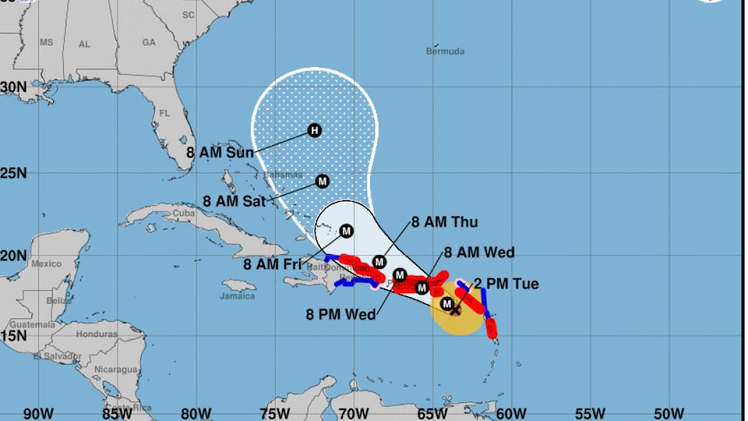
Hurricane Hugo (1989)
Hurricane Hugo landed in Puerto Rico on September 18, 1989, as a Category 4 storm. It caused widespread destruction across the island, particularly in the eastern and central regions. Wind speeds reached up to 140 mph, and the storm was responsible for about 30 deaths and billions of dollars in damage. Hugo significantly impacted Puerto Rico’s infrastructure, including power lines, roads, and homes. Thousands of residents were left without electricity for weeks, and recovery took months. The hurricane led to changes in building codes and prompted a reevaluation of disaster preparedness measures across the island.
Hurricane Maria (2017): The Devastation and Recovery Efforts
Hurricane Maria struck Puerto Rico on September 20, 2017, as a Category 4 storm, causing unprecedented devastation. With wind speeds exceeding 155 mph, Maria destroyed the island’s power grid, leaving millions without electricity for months. It caused at least 2,975 deaths and inflicted extensive damage to homes, businesses, and infrastructure. The storm also devastated agriculture, causing massive losses to crops and livestock. Recovery efforts were long and complex, with both local and federal agencies working to restore services. Puerto Rico continues to rebuild, focusing on resilience through renewable energy and infrastructure improvements to withstand future storms.
Also Read: Amanda Landry Bio, Age, Career, Net Worth, Height & More!
Post-Hurricane Recovery and Rebuilding Puerto Rico
Restoration of Power and Communication Networks
Restoring power and communication networks in Puerto Rico after a hurricane is one of the most urgent recovery tasks. Following Hurricane Maria (2017), the island’s entire power grid was severely damaged, and it took months for electricity to be restored to all parts of Puerto Rico.
Local and federal agencies, alongside private companies, worked tirelessly to rebuild power lines, restore transformers, and repair substations. In addition to restoring electricity, improving communication networks became a priority. Satellite phones, portable cell towers, and solar-powered communication systems provided essential communication services, especially in remote areas. Long-term plans now focus on upgrading the electrical grid to make it more resilient, including investments in renewable energy sources like solar power to reduce future reliance on traditional power systems.
Reconstruction of Homes, Businesses, and Infrastructure
Rebuilding Puerto Rico’s homes, businesses, and infrastructure following a hurricane is a long and complex. After Hurricane Maria, many homes were uninhabitable due to wind, rain, and flooding. Reconstruction efforts have focused on providing temporary shelter and moving towards permanent housing solutions.
This includes building more storm-resistant homes and reinforcing existing structures to withstand future hurricanes better. Small businesses were also heavily impacted and received financial aid to help with rebuilding and recovery. Regarding infrastructure, key roads, bridges, and public buildings were repaired to ensure accessibility and the resumption of critical services. Long-term rebuilding efforts ensure that Puerto Rico’s infrastructure is more resilient to future storms.
Community Support and Economic Assistance
Community support and economic assistance have been vital in helping Puerto Ricans recover from hurricanes. In the aftermath of Hurricane Maria, local organizations, international aid groups, and federal programs mobilized quickly to provide those affected with food, water, medical supplies, and shelter.
Economic assistance has also been crucial for both individuals and businesses to rebuild. FEMA and other federal programs provided grants, loans, and financial aid to help residents repair their homes and businesses. Additionally, various community-based initiatives have focused on mental health support, education, and employment programs to assist residents in returning to everyday life. These efforts, combined with government incentives and local businesses, have been pivotal in driving Puerto Rico’s recovery and fostering resilience.
Hurricane Season and Puerto Rico’s Natural Resources
The Impact of Hurricanes on Flora and Fauna
Hurricanes can cause significant damage to Puerto Rico’s flora and fauna. High winds uproot trees, destroy forests, and flood ecosystems, impacting plant and animal life. Species like the Puerto Rican parrot and marine life, including coral reefs, suffer from habitat loss, reducing biodiversity and ecosystem health.
Conservation Efforts After a Major Storm
After hurricanes, conservation efforts focus on restoring ecosystems and protecting vulnerable species. These include reforestation projects, wildlife rehabilitation, and the restoration of coastal areas. Puerto Rico also emphasizes protecting marine ecosystems, such as coral reefs, through restoration programs and creating protected marine zones to support biodiversity recovery.
The Future of Hurricane Season in Puerto Rico
Long-term Climate Change Impacts
Climate change is expected to increase the intensity and frequency of hurricanes in Puerto Rico. Rising ocean temperatures fuel stronger storms, while shifting weather patterns may extend hurricane seasons. These changes will make Puerto Rico more vulnerable to severe weather, requiring stronger climate resilience and adaptation strategies.
Efforts Toward Improving Storm Forecasting and Emergency Management
Puerto Rico focuses on improving storm forecasting and emergency management systems to better prepare for future hurricanes. Advances in technology, such as enhanced satellite data and predictive modelling, help track storms more accurately. Improving communication, evacuation plans, and infrastructure resilience will also support quicker, more effective responses to future storms.

